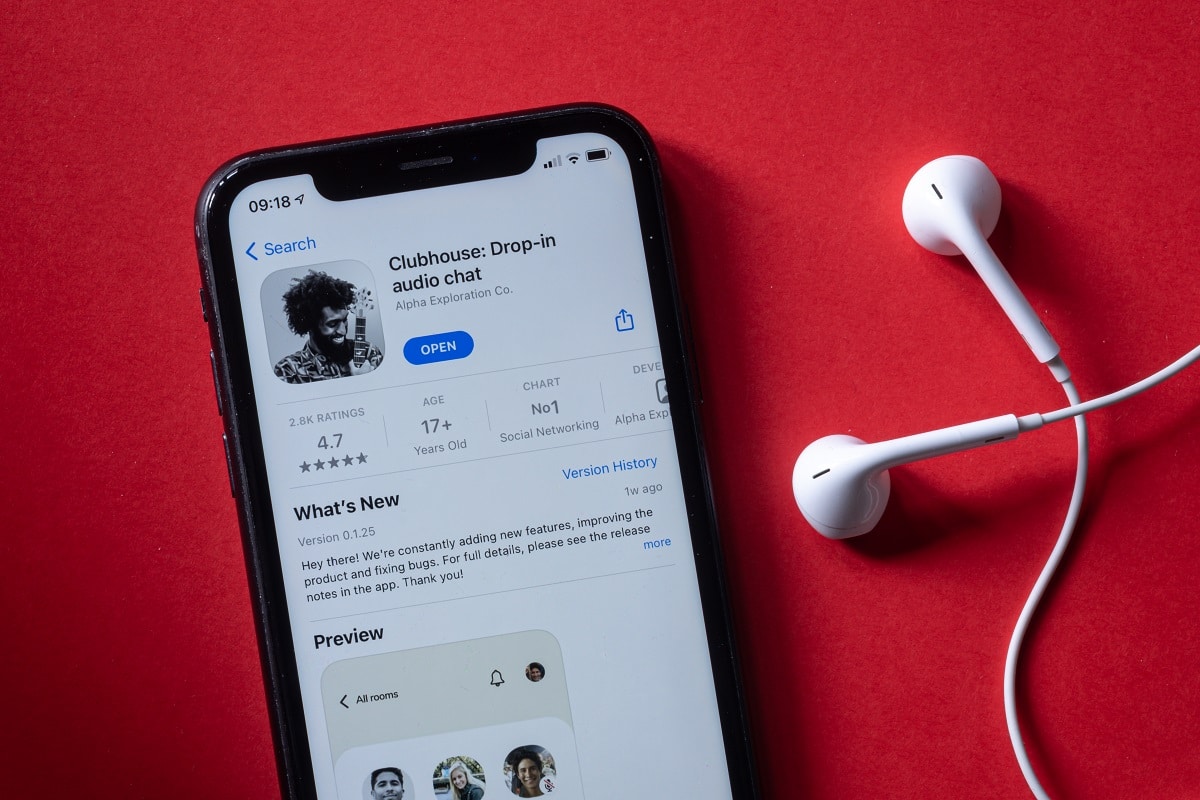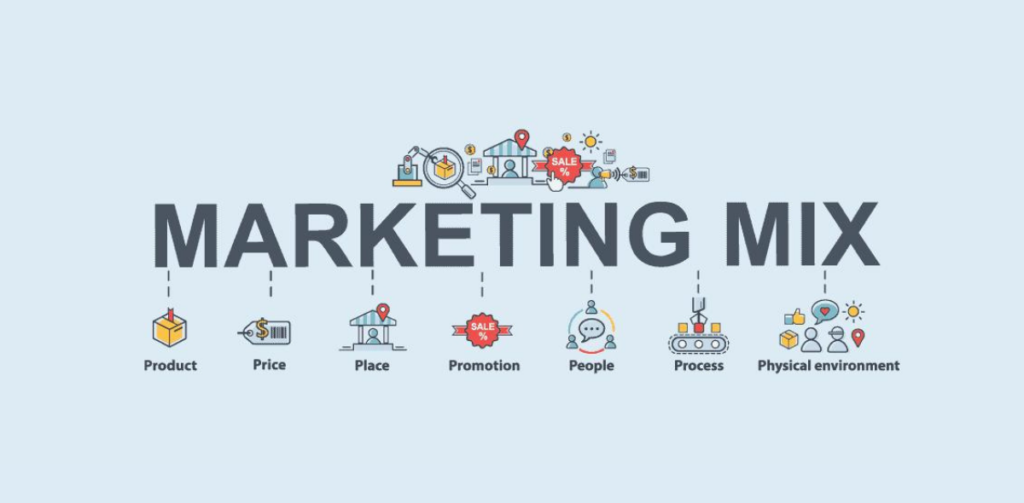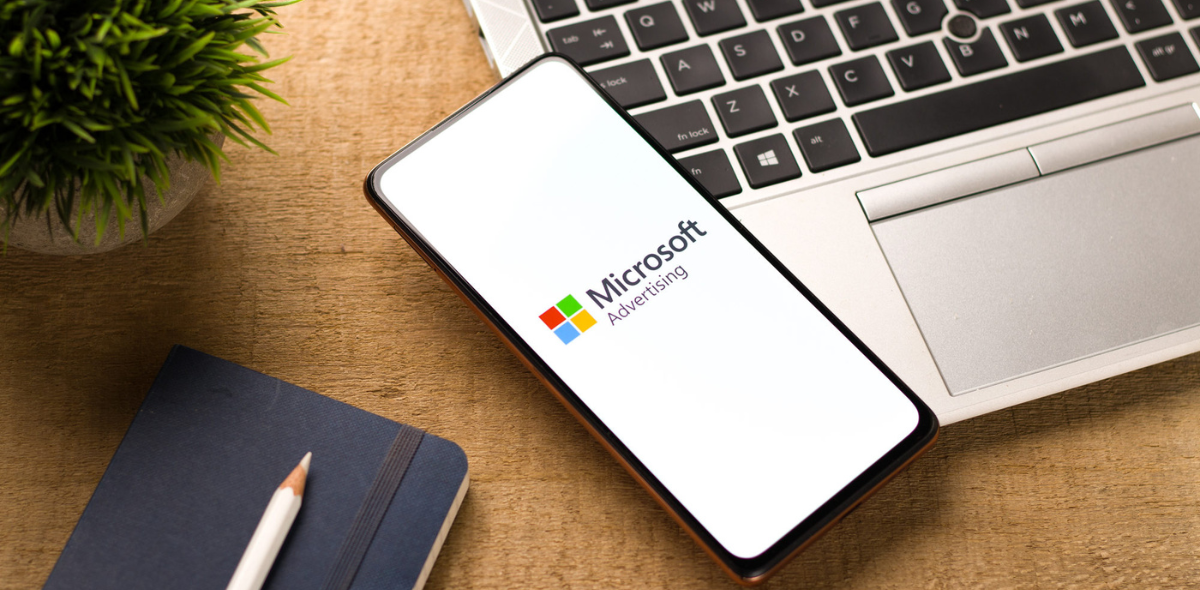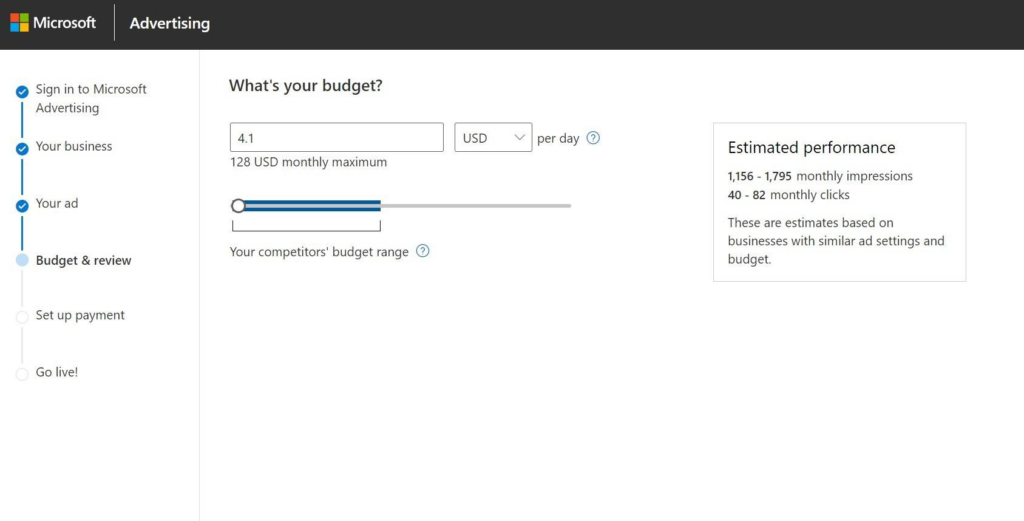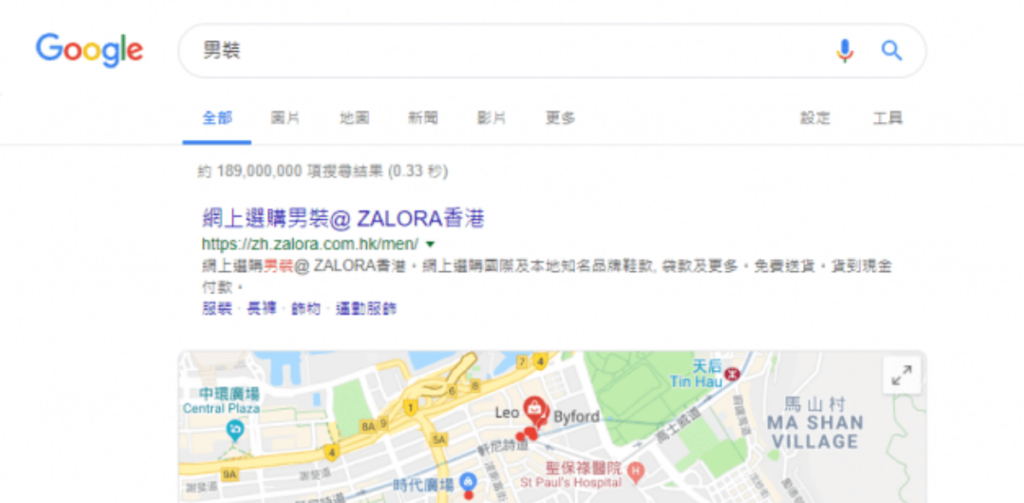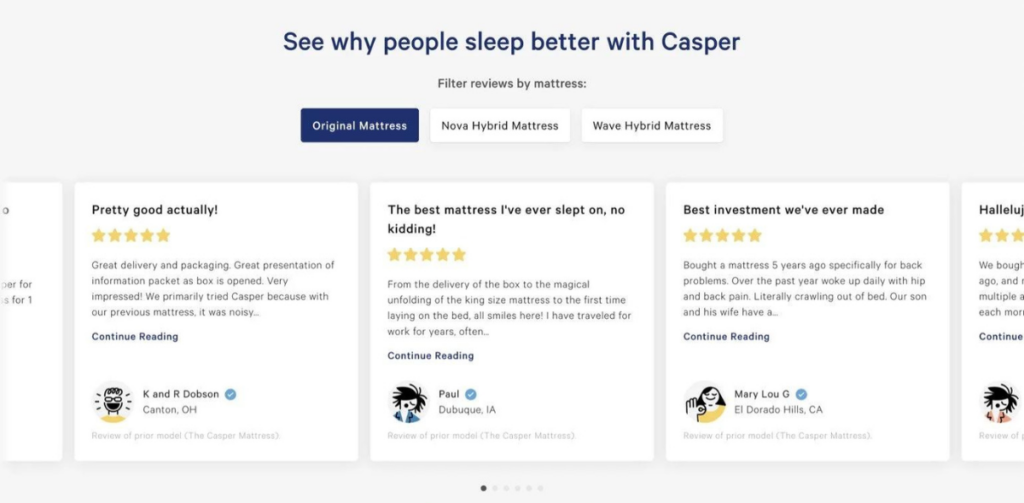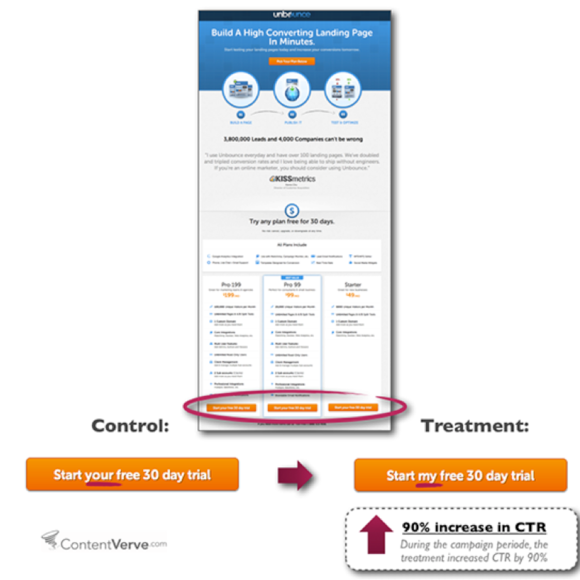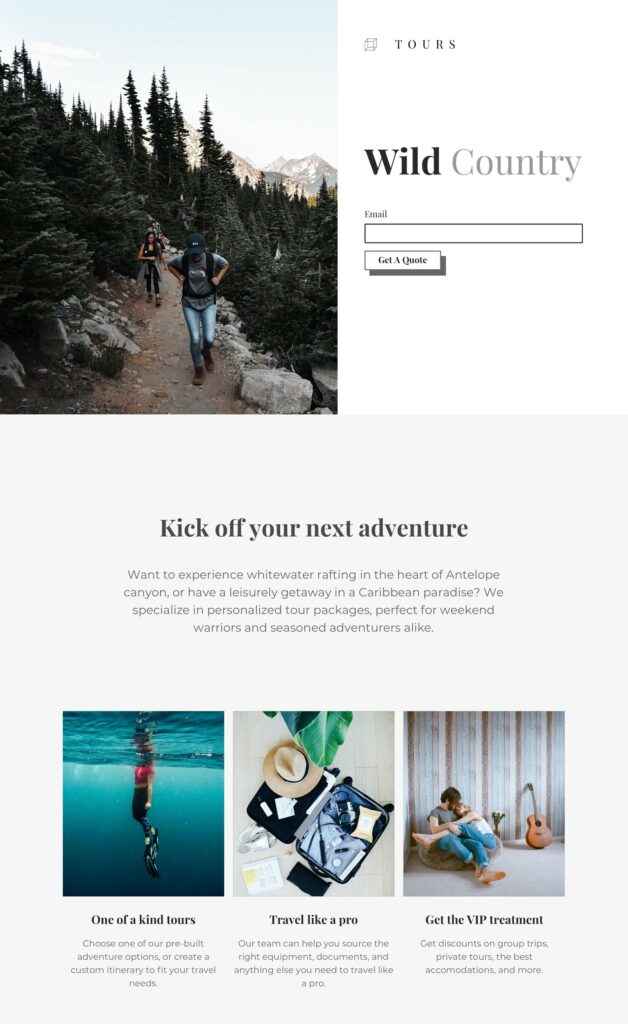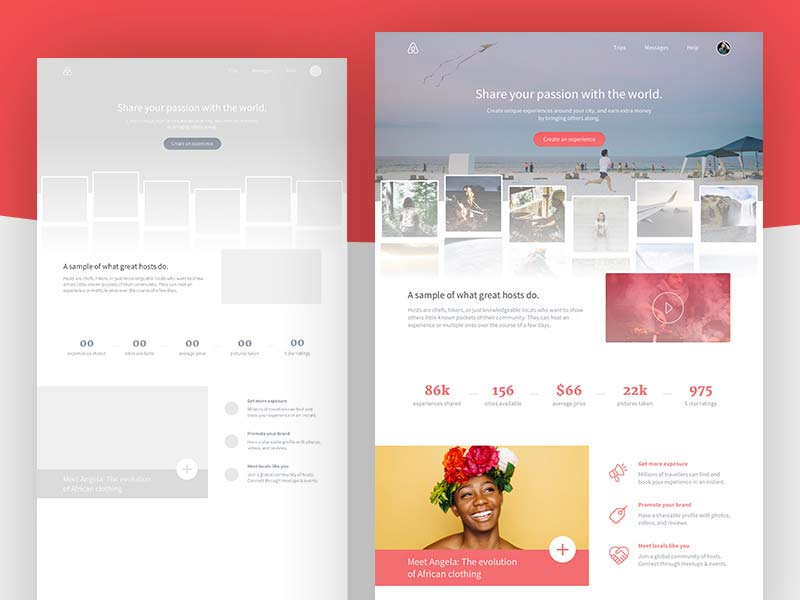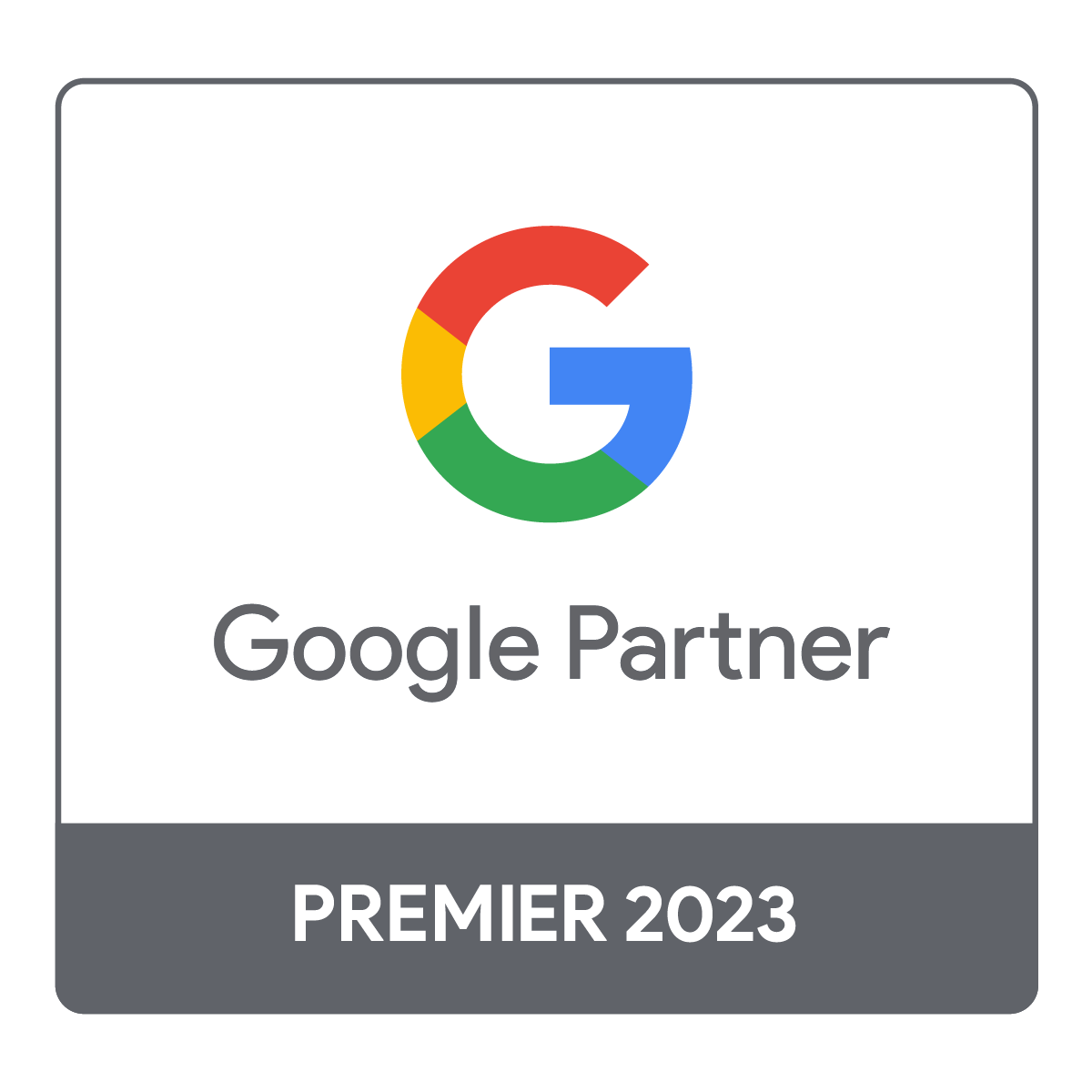In the early years of the App Store and Google Play, App Store Optimization (ASO) was considered very mysterious. People speculated whether the logic behind it would be similar to SEO (Search Engine Optimization). There were also many circulating best practices, such as needing to include a keyword at least 5 times in the Description section.
As the number of apps and the number of developers entering the app market have increased, the focus on ASO in recent years has grown. At the same time, there are more examples to verify the ranking metrics behind ASO. In this guide, First Page will use our own experience and client case studies to explain the different ways to use ASO.
Table of contents
What is App Store Optimization (ASO)?
App Store Optimization refers to how app and game developers adjust various details of the app store page, including the name, description, screenshots, etc., to achieve the following three effects:
- Increase the exposure of the application
- Improve the conversion rate of users downloading the application
- Get the opportunity to be recommended (Featured) by Apple or Google

For any business, ASO should be one of the pillars of its app marketing strategy.
ASO belongs to the organic search, non-paid traffic channel. The concept of the app store page is similar to that of a website’s landing page, and it can be said that the app store page is a must-visit place for every user before downloading (unless you are performing a direct APK download). If you cannot effectively communicate the selling points of your app or game on this page to attract users to download, it wouldn’t matter how good your app or game is.
App Store & Google Play Elements
Before diving deep into ASO, it is necessary to understand the elements that can be optimized in the two main stores – the App Store and Google Play. Below, we will share some past observations and insights based on each element, and also share some questions we have. We hope that app and game developers can benefit from it.
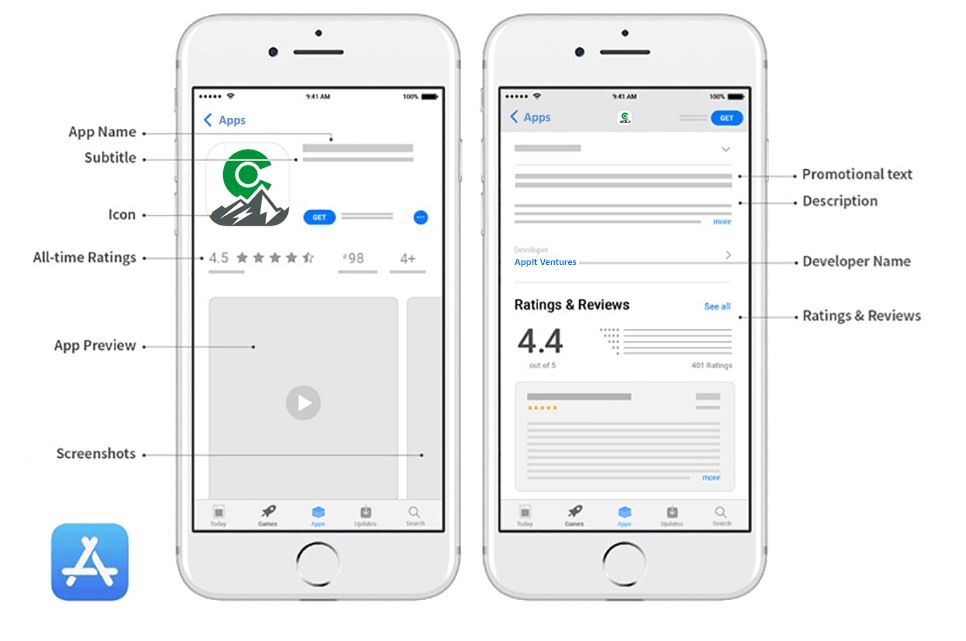
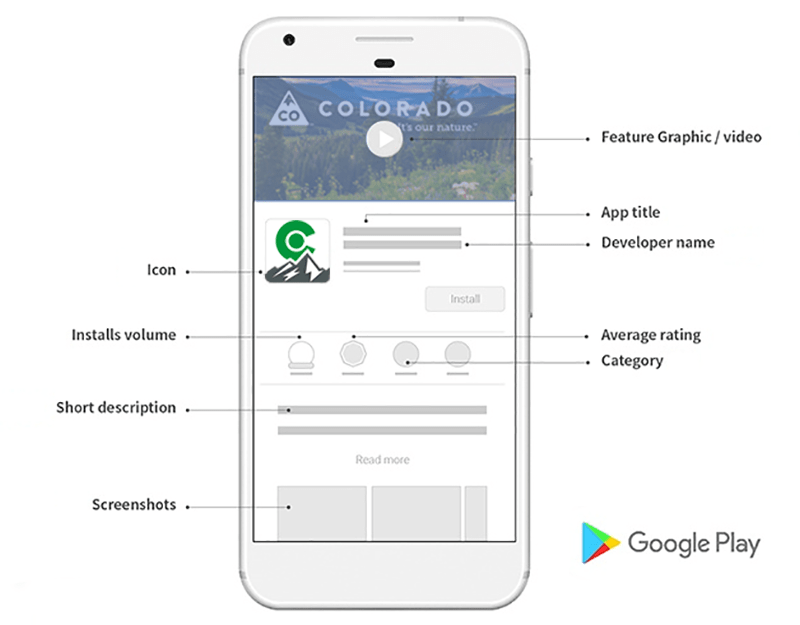
App Name & Subtitle
First, we need to clarify which part belongs to the App Name and which part belongs to the Subtitle (please note that only the Apple App Store has a Subtitle section, Google Play only has an App Name):
In the Apple App Store, both the App Name and Subtitle are limited to 30 characters each, while in Google Play, the App Name can have up to 50 characters. Due to the different character limits, and because the App Store provides a Subtitle for developers to further introduce the App, it is understandable that the App name may vary slightly between the two app stores.
It is important for you to fill in your subtitles, because if you don’t, it will automatically be filled in as a “category”, which is not the most catchy and accurate description of your app. A compelling subtitle can also improve conversions and downloads numbers.
App Icons
The App Icon is also a part of the search results that users will see first. Moreover, when users download the App, what appears on the phone screen is mainly the App Icon and the App Name. Therefore, there have been many discussions about how to make a good App Icon, including what color to use for the background, whether a border is necessary, how many colors should be used in the Icon to best attract downloads, etc. However, to be honest, there doesn’t seem to be a unified opinion on this over the years.
Let us share our own experience here. From what we see from our clients, using game characters as Game Icons can be said to be an unwritten rule. Most games with a story or characters will use characters as Game Icons:
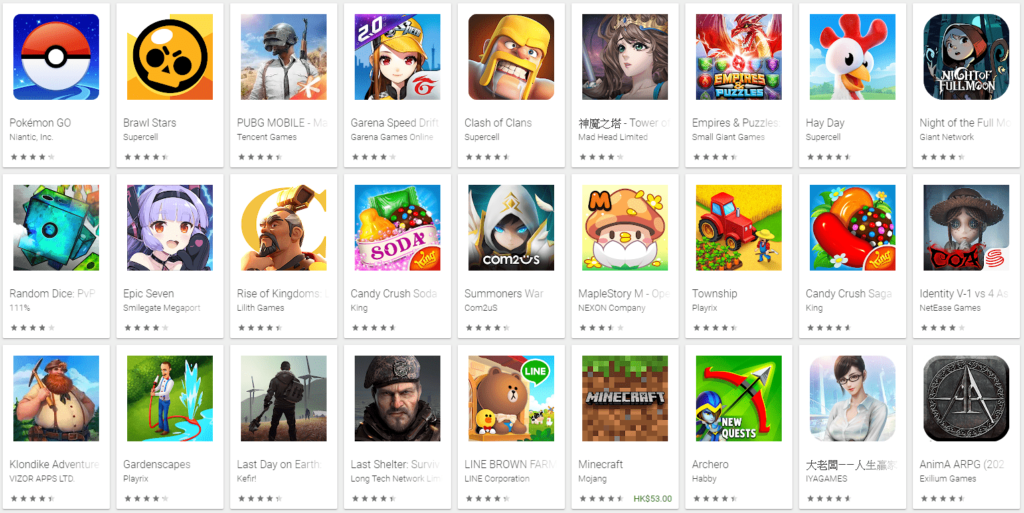
For Apps, it’s more common to use the company logo or a very simple pattern to express the purpose of the App. Generally, we do not recommend using too much text on the App Icon.
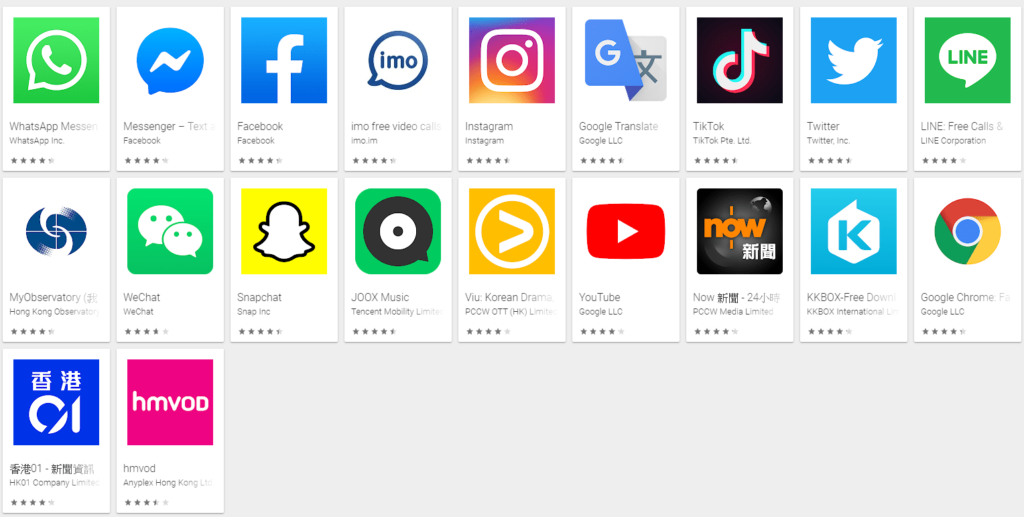
The Google Play Console also allows you to conduct A/B Tests to find out which combination of Icon/Description/Screenshots can bring you the best results. For details, you can refer to the guidelines in the Google Play Console. However, the Apple App Store does not currently have this feature.
Additionally, Google Play and the App Store have slightly different requirements for Icons. You can refer to the following guidelines for their limitations:
App Descriptions
The primary function of the description is to allow users who are interested in the app to understand more about its features and selling points.
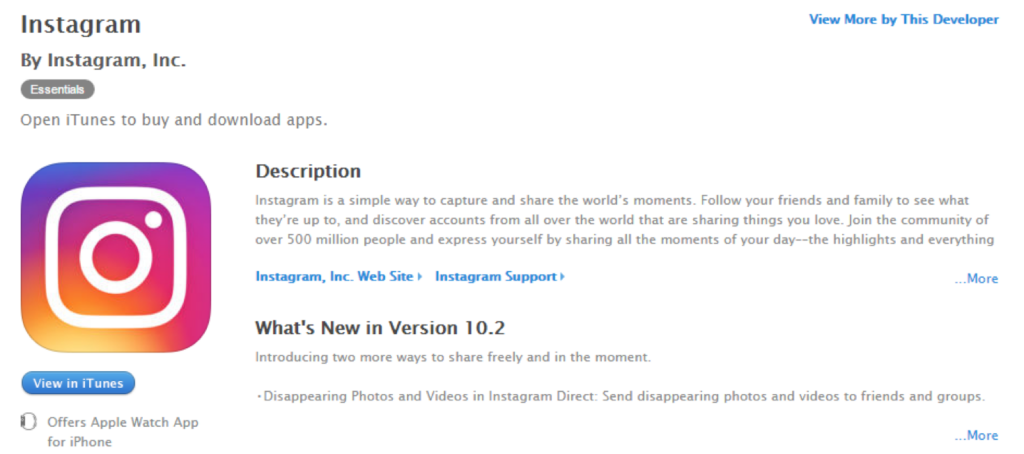
In the early days of ASO, descriptions that included keywords for more than 4-5 times are seen to wield better results. However, in recent years, many experts believe that the impact of the Description on ASO has become more minimal. Additionally, its position on the page is lower than in the past. Now, when users enter the store page on an iOS phone, they will first see the new features (What’s New) and screenshots. They have to scroll down to see the detailed description, and on an Android phone, users need to click on the short description to see the Detailed Description.
However, this does not mean that the Description should not be valued. We believe that everyone still needs to present their main features and selling points in a concise and powerful manner in the Description section, because there are still users who will understand and determine whether this App is suitable for download from this part.
Additionally, we also recommend that you try to use bullet points or short sentences to divide sections in the Description to make it easier for users to read. At the same time, we do not recommend putting the Chinese and English Descriptions together in a bilingual format, but it is better to set different descriptions according to different language settings (if you are launching an App in Hong Kong, generally, Chinese and English are enough).
However, you can note that according to Apple’s official statement, the Promotional Text (appearing at the top of the Description) does not affect the search ranking of the App.
App Screenshots & Videos
| App Type | App Store | Google Play |
| Portrait App (Search Result) | Shows 3 screenshots | No screenshots or videos |
| Portrait App (App Page) | Shows 1.5 screenshots, or 1 video and 0.5 screenshot | Shows 4.5 screenshots or 1 video and 1.5 screenshot |
| Landscape App (Search Result) | Shows 1 screenshot | No screenshots or videos |
| Landscape App (App Page) | Shows 1 screenshot or 1 video | Shows 1.5 screenshots or 1 video and 0.5 screenshot |
Keyword research helps you uncover what your target audience is looking for.

Keyword Research.
In addition to adding keywords in the description, the App Store specifically provides a place for you to add keywords, with a total limit of 100 characters:
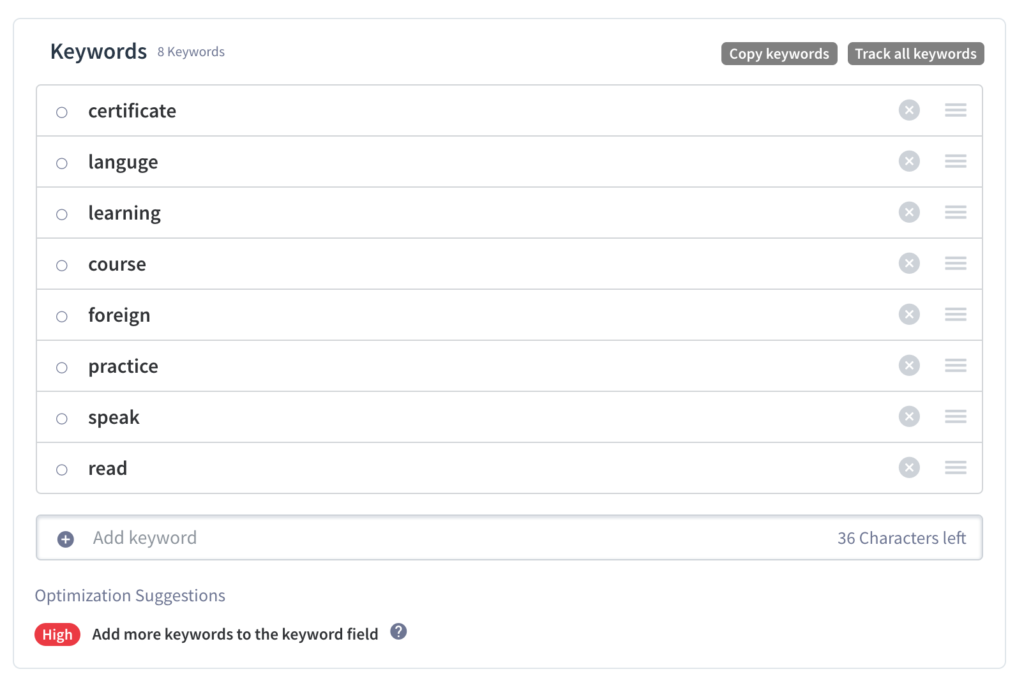
You may rely on intuition to select keywords, or some people may try to use Google Keywords Planner to find out more commonly used keywords in Google searches. However, we recommend using 3rd party tools to find out the keywords that your competitors are currently ranking for in the app store (however, you need to pay for the version that provides information about search volume, traffic share, etc.) Below we will share the top 3rd party tools we think suits best for ASO.

Want more sales? Want more leads?
See how First Page can drive insane sales. See real results from your ASO campaign! Contact us!
Top ASO 3rd Party Tools
AppTweak

AppTweak, a leading ASO tool trusted by over 1,500 mobile leaders, stands out in today’s market for its capability to enhance app visibility and drive organic downloads. It provides monitoring for app performance, uncovers new avenues for growth, and supports the development of effective ad strategies.
App Radar

AppRadar provides an in-depth analysis of how your app is being discovered. This powerful tool pledges to save you between 3 to 10 hours each month on ASO tasks, and helps you to expand your user base utilizing an AI-powered engine.
Data AI

Data AI, previously known as App Annie, is arguably the most recognized platform for app market analysis, offering reliable app data and insights to thrive in the global app economy. Over a million registered users leverage Data AI’s statistics and research to make well-informed decisions, expand their businesses, and gain a competitive edge.
Like to learn more about well-crafted headlines for your ads?
We have a great blog post you can read to learn more fast!
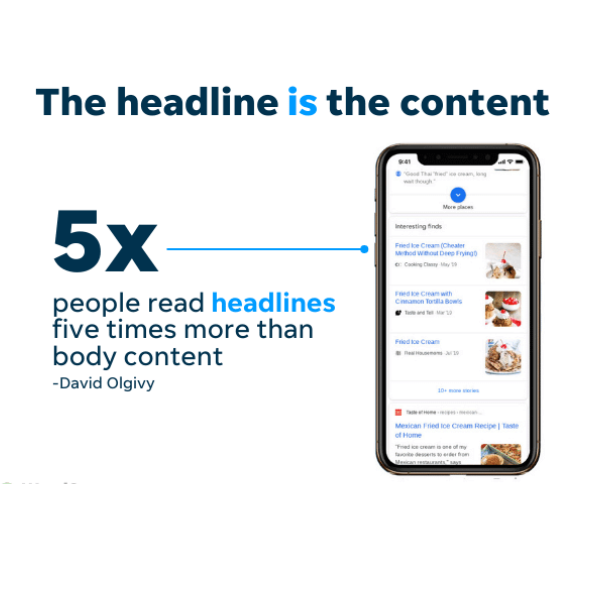
Other Minor Details to Pay Attention While Optimizing Apps
The following details are often overlooked because they do not directly constitute ASO elements, but they can still affect the exposure and download opportunities of your app and games:
App Package Size
Whether in the App Store or Google Play, if the app size exceeds a certain limit (200MB for the App Store and 150MB for Google Play), a pop-up will appear asking if the user wants to continue when they try to download using 4G (this message will not appear when the user is using WiFi):
This can decrease the likelihood of users downloading your app while using 4G. Therefore, it’s recommended to be mindful of the app size when uploading your application to the store.
Age Restrictions
When launching an App or game in the app store, you are usually required to answer a series of questions (such as whether there is any violence or gambling content in your app) to determine its age rating. If your app is rated 17+, it can affect its exposure and chances of being featured. Therefore, it’s advisable to answer these questions honestly and carefully to avoid unnecessarily raising the age rating of your app, which could impact its performance.
App Categories
On the App Store, an application can select two categories, including a Primary and Secondary category. In the past, some developers would specifically choose a less competitive category as the Secondary Category, so they could push for higher rankings in these less competitive categories during promotions. However, this practice is less commonly heard of now, and is only provided here for your reference.
Are App Reviews Important?
The aspects mentioned above are all within the control of developers, but user reviews are also recognized as an important element of ASO, albeit completely out of the developer’s control.
Besides ensuring an overall positive app and game experience to earn good reviews, we also suggest prompting users with a pop-up asking if they can leave a positive review in the app store at moments they are likely to feel positive (e.g., after completing a task, receiving a reward, etc.). This proactively provides users with the opportunity to leave a good review on the app store page.
However, please note that it is strictly against app store rules to directly incentivize users to leave positive reviews (for instance, by offering specific rewards for leaving a positive review), as this could lead to the app being removed from the store. We also strongly advise against purchasing fake reviews, as they can be easily detected and can likewise risk your app being taken down.
Final thoughts
At First Page, we provide professional App Store Optimization services. These services can help you improve your visibility on app stores.
As part of our process, we help people build basic ASO knowledge. We do this to help them better understand how the visibility and performance of app stores work.
The strategy you adopt will also be dependent on your business’s age.
Implementing effective ASO will take longer if you start out with a new app.
Although you should still pay attention to ASO, you can start with a ASA (App Store Advertising) strategy to boost your rankings until proper ASO can be established.
If you want a more in-depth understanding of which digital marketing strategies to employ, get a free ASO analysis from us at First Page here.

Ready to reach top app store rankings?
We know you want to make real money! Get ready to convert customers like crazy. Please do not delay. Contact us today!
Unsure of getting in touch? We don’t bite! If you’d prefer, we invite you to learn more about our ASO services. Don’t delay, get ahead of the competition now!
What other marketing tactics can you use to beat your competition?
Here are some helpful marketing tactic blogs that can help you break all your past sales records, and your competition in the process:
- Perfect Your Email Marketing Strategy Now
- What Are The Top Ppc Ideas You Ought To Know?
- Social Media Strategies: Successful Ones You Can Learn From
- Helpful Content Tips: Get Noticed Before The Competition
- 6 Easy Digital Marketing Hacks To Increase Your Leads
Are you a busy business owner? You may not have the time to run the marketing tactics you need to make money regularly. If this is the case, we encourage you to review some of our strategic marketing services to drive more sales:
- SEO for your business to drive qualified leads
- Social media management for improved brand awareness
- Linkbuilding to drive organic traffic to your website
- Top converting landing pages to convert your leads
- Email marketing campaigns to bring in referrals
